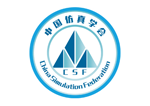Journal of System Simulation
Abstract
Abstract: In this paper, the dynamic model of bending- torsion -axis- heat of cylindrical helical gear system is established by considering the time-varying meshing stiffness and meshing impulse excitation. The NURBS method is used to reconstruct the trimming surface through superimposing the theoretical tooth surface and trimming tooth surface, then the influence of different trimming on the gear transmission error is analyzed. The optimal trimming surface is obtained by Chaos Ant Colony Algorithm. The finite element method is used to analyze the transmission error of the modified gear and the unshaped gear. The numerical simulation analysis shows that the amplitude of the transmission error decreases by about 38%. The tooth contact area tends to be the best position of the tooth surface, and the load density distribution is uniform. The experimental results show that the amplitude of the vibration spectrum of the gearbox decreases by 31.6%, and the vibration reduction effect is obvious. In addition, the tooth contact area is consistent with the simulation results.
Recommended Citation
Liu, Xinrong; Wang, Zhonghou; and Aizoh, Kubo
(2019)
"Research on Gear Transmission Error Based on Chaotic Ant Swarm Optimization,"
Journal of System Simulation: Vol. 31:
Iss.
9, Article 25.
DOI: 10.16182/j.issn1004731x.joss.17-0398
Available at:
https://dc-china-simulation.researchcommons.org/journal/vol31/iss9/25
First Page
1942
Revised Date
2017-09-27
DOI Link
https://doi.org/10.16182/j.issn1004731x.joss.17-0398
Last Page
1949
CLC
TH132
Recommended Citation
Liu Xinrong, Wang Zhonghou, Kubo Aizoh. Research on Gear Transmission Error Based on Chaotic Ant Swarm Optimization[J]. Journal of System Simulation, 2019, 31(9): 1942-1949.
DOI
10.16182/j.issn1004731x.joss.17-0398
Included in
Artificial Intelligence and Robotics Commons, Computer Engineering Commons, Numerical Analysis and Scientific Computing Commons, Operations Research, Systems Engineering and Industrial Engineering Commons, Systems Science Commons

